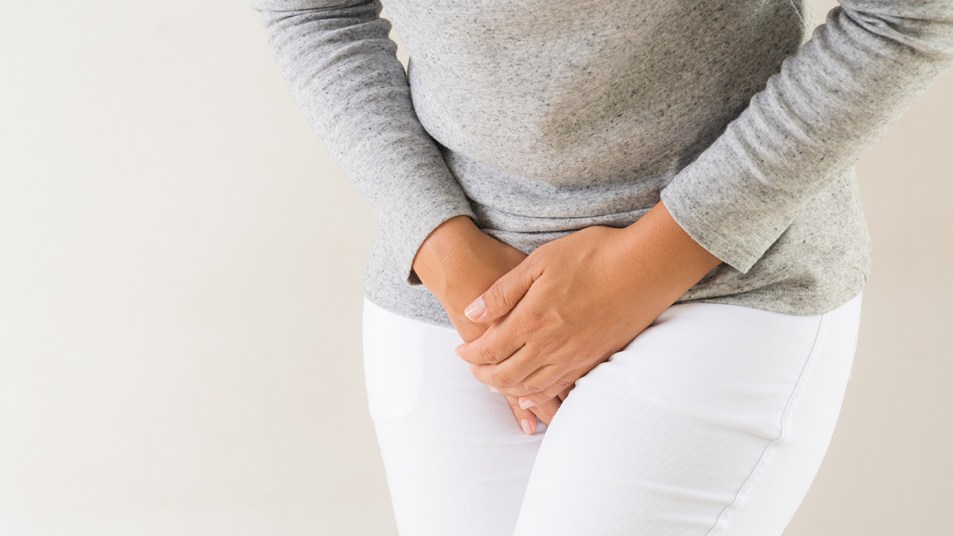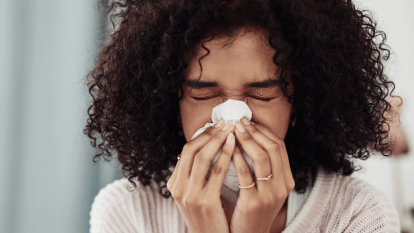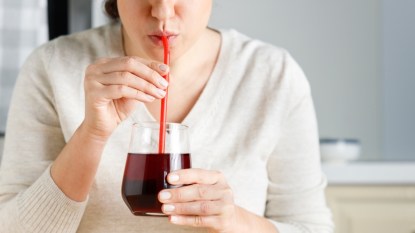A UTI That Won’t Go Away May Not Be a UTI At All: The Telltale Symptom to Look For
Ob/gyns reveal how to figure out what's causing your discomfort — and speedy home remedies

If you’ve ever had a urinary tract infection (UTI), you’re all too familiar with the pain, burning and constant need to run to the bathroom that are hallmark symptoms of the condition. But if you’re experiencing a UTI that won’t go away — lasts longer than two weeks — gynecologists warn that you may not actually have a UTI at all.
UTIs are extremely common for women of all ages — and even more so after menopause. In fact, half of all women will have at least one UTI in their lifetime, and four in 10 of those women will deal with recurrences, says Barbara DePree, MD, a certified menopause practitioner and founder of MiddlesexMD.com, an educational resource for women in perimenopause and beyond. But the symptoms of a UTI are surprisingly close to those of a chronic inflammatory bladder condition called interstitial cystitis (IC), explains Laura Corio, MD, author of The Change Before The Change — and that’s where the confusion can come in.
Symptoms of chronic UTIs
Technically, a UTI is an infection in any part of your urinary system, but these infections almost always target the bladder and urethra, explains integrative gynecologist Felice Gersh, MD. UTIs are typically caused by bad bacteria entering the urinary tract through the urethra and multiplying in the bladder, leading to infection. Even the mildest UTI can be intensely aggravating, but a UTI that won’t go away can seriously impact your quality of life.
Women with chronic UTIs may have repeated or recurring infections, symptoms that don’t disappear within 48 hours after treatment or a UTI that lasts longer than two weeks, according to the Baylor College of Medicine. Although symptoms can vary from woman to woman, they often include:
- Urgent need to urinate
- Frequent need to urinate
- Pain or burning when urinating
- Soreness in the lower abdomen, back, or sides
- Urine that has a strong or foul odor, is cloudy or is tinged with blood
Symptoms of interstitial cystitis
Interstitial cystitis (IC) affects up to 12 million people — mostly women — in the U.S. IC can feel like a severe bladder or urinary tract infection, explains Dr. DePree. Though the exact cause is unknown, IC is most likely due to a defect or damage in the lining of the bladder wall that allows toxic substances in urine to cause painful irritation, she says. Other causes of IC could include an autoimmune reaction, heredity or even an allergy. Dr. DePree says IC symptoms can come and go. Triggers like sitting too long, stress, certain foods or drinks, sex and high-impact exercise can all bring on flares. “Understanding what makes them worse can often help women manage the condition,” she says. Common symptoms include:
- Urinary frequency
- Urinary urgency
- Pelvic pain and pressure
- Discomfort in the bladder and pelvic region
- Pain in the lower abdominal, urethral, or vaginal area
Is it a UTI or interstitial cystitis?
You can take a simple home test, like AZO UTI Test Strips (Buy on Amazon, $10.15 for 3 tests) to determine if your symptoms are caused by a UTI. Just place a strip in your urine stream and check the results against the chart on the box. If the test is positive for a UTI, Dr. Corio suggests scheduling a visit with your doctor. She’ll be able to perform a more sensitive test to determine which strains of bacteria are causing your infection. She can also prescribe targeted antibiotics. If the test is negative, you likely have IC, says Dr. Corio — and you’ll want to see a urologist to confirm the diagnosis. Dr. Corio adds that there’s one key symptom that indicates IC: an urge to urinate at night. “Repeated nighttime bathroom trips are a hallmark of IC,” she says. Indeed, in one study, 62% of people with IC got up to urinate at least 2 times a night, and 21% did so at least four times per night.
How to treat a UTI
Antibiotics are the standard treatment for UTIs. And many doctors will prescribe the medication over the phone to women who are prone to UTIs. “I almost never see anyone in-person for a UTI,” says gynecologist Mary Jane Minkin, MD, a clinical professor of obstetrics, gynecology and reproductive sciences at the Yale School of Medicine. In her experience, patients describe their symptoms virtually and she sends them to a lab for tests, if needed.
Natural remedies are surprisingly effective. Cranberry juice is the go-to for UTIs, and for good reason. In a review of 50 studies published in Cochrane Reviews, drinking cranberry juice or taking cranberry supplements dramatically reduced the number of UTIs in women with chronic UTIs. (Click through for the best UTI-prevention supplements.)
Tangy hibiscus tea can also help. Investigators in the Journal of Ethnopharmacology report that enjoying a cup of hibiscus tea daily can stop the cycle of recurring UTIs. In the study of more than 100 adults with UTIs, those who regularly drank the tea were 36% less likely to experience a repeat infection. The researchers say the sip boasts anti-inflammatory compounds that work much like cranberry juice to ease the kidney inflammation that’s been linked to UTIs. (Click through for more benefits of hibiscus tea.)
How to treat IC
Although there’s no cure for IC, and no singular treatment is right for every patient, your doctor may prescribe medications to help with the burning and pain and to relax the bladder. Nerve stimulation, physical therapy and even surgery may also help. In addition, studies have shown that certain lifestyle measures may help reduce symptoms — and the impact IC can have on daily life.
Some women find relief by lowering their consumption of coffee, tea, alcohol, chocolate, spicy foods and artificial sweeteners, says Dr. DePree. Others get relief by drinking a daily glass of water mixed with 1 tsp. of baking soda, which helps neutralize acid in the urine to ease burning sensations and calm the bladder.
Still others, like Florida resident Iliana Brockman, swear by concentrated aloe vera supplements. Aloe vera contains pain-relieving and anti-inflammatory compounds, plus increases the production of molecules that facilitate healing in the bladder lining. In fact, scientists at the National Institutes of Health found that 92% of women who took concentrated aloe vera for 30 days experienced a reduction in pain and other symptoms.
Note: Dr. DePree advises against consuming aloe vera juice for IC symptoms, since many brands contain the preservative citric acid, which can further irritate the bladder. Click through to learn how to make your own aloe vera juice at home (it’s easy and inexpensive and avoids the citric acid problem) and also how women are using aloe vera juice to speed weight loss.
Finally, you may want to consider consulting with a urologist, who can make a definitive diagnosis and help outline the most effective treatment strategies for you.
For more stories on down-there symptoms, keep reading!
Gynecologists Break the Silence On ‘Hair Down There’ Over 50 — All Your Questions Answered
This content is not a substitute for professional medical advice or diagnosis. Always consult your physician before pursuing any treatment plan.













